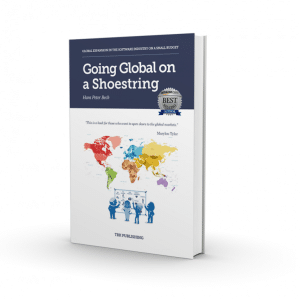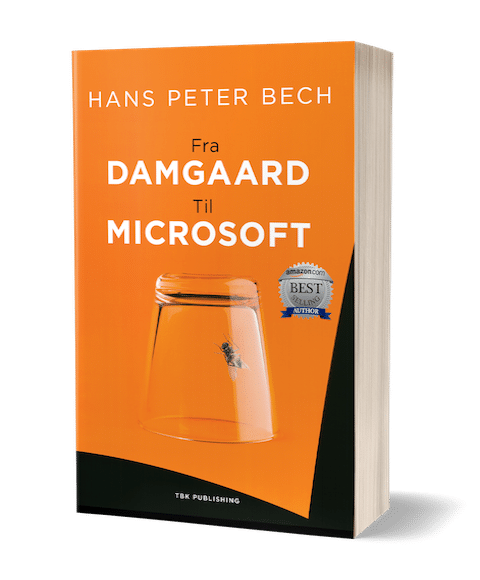This is the ninth article in a series on how I produce international bestsellers. This time I will be discussing the financial aspects of indie publishing.
Links to the first eight articles:
Article 1: How to make an international bestseller
Article 2: The four main activities in producing a bestseller
Article 3: Idea and creation
Article 4: Production
Article 5: Distribution
Article 6: Marketing 1
Article 7: Marketing 2
Article 8: Marketing 3
Generally, you can decide for yourself how much it should cost to publish your books. It all depends on how much of the work you can do yourself and which formats you choose.
My books are ordinary textbooks in the standard format of 6 x 9 inches, corresponding to 152.4 x 228.6 mm. There are only a few illustrations, and the content can be reproduced in monochrome print, as an e-book and (without the illustrations) as an audiobook.
The author’s workbench
In my work as a consultant, I use several tools that also serve my writing and publishing business. This applies to my computers and pretty much all the software I use.
I only use Apple and have a MacBook Pro and a MacMini with a 27-inch screen. I also have an iPhone (with which the picture below is taken) and an iPadPro.

Scrivener and Endnote are the only tools used exclusively for writing books. Scrivener costs €70 in total and has so far been used to write seven books. It is €10 per book. Endnote costs approx. €50 every three years.
External assistance
The most expensive items are illustrations, editing, proofreading, cover design, pagination and layout.

I have lately cut back on the number of illustrations making the production of the audiobook version easier. For my latest book Going Global on a Shoestring, I thus only spent around €1,000 on graphic design and the cover. In addition, the pagination or layout of the printed version costs another €1,000.
The editorial work, that the expert committee carried out, was free, while the linguistic editorial and proofreading cost €300.
In total, it cost me around €2,300 to get the book ready for distribution.
Expenses for external assistance for English books are significantly lower than for Danish, as the supply of freelancers is considerably higher, and the prices they demand are much lower.
Print-on-demand
I use print-on-demand (PoD) for my English books, so I have no upfront printing costs. Usually, I order 50 printed copies for the Danish market, which DBK distributes. The price using BookBox is approximately €150. When they are sold, I order another 50 copies.
€3 per book is significantly more than the PoD prices at Amazon KDP and IngramSpark. However, since I also charge a higher price for the books in Denmark, my gross margin is roughly the same.
IngramSpark demands €39 in upload fee for a combination of e-book and PDF for print. So, make sure it is the final version you upload because they charge the fee each time!
Fra Damgaard til Microsoft
My Danish business biography, Fra Damgaard til Microsoft (From Damgaard to Microsoft), had a completely different economy.

Editing, illustration and design, image rights, and proofreading were about €10,000, and I invested the same amount in marketing. Since the book has sold 3,000 copies, my investment has been paid back, but it has not in itself been a very profitable business. I have earned far more from the workshops, keynotes and consulting activities than the book has generated.
On the other hand, it was great fun to research and write the book, and I am still very pleased with the result. Many readers call it Denmark’s best-documented entrepreneurial history, and I think that is a nice legacy.
The book is now available in English titled 5,460 Miles from Silicon Valley – The In-depth Case Study of What Became Microsoft’s First Billion Dollar Acquisition Outside the USA.
Auxilliary income streams
As mentioned in the second article in this series, my motive for writing books was a desire to restructure my consulting business.

It has indeed succeeded. I have increased the profitability of my consulting business while reducing the hours it requires. I now have more time for writing, which again increases the stream of inbound inquiries.
My books generate inquiries from potential clients from near and far who want help with their specific challenges. I can handle most of the jobs with a few web meetings, while others require many months of work. Some projects even run for years or have ongoing activities.
One of my favourite jobs is producing content for clients. It turns out that many software companies struggle to explain what they do, what value they create for their customers, and how they differ from their competitors. Especially for companies that do not yet enjoy a widespread degree of awareness, it seems a considerable challenge.
Producing marketing material that potential customers want to consume, that is SEO friendly, drives trust and generates inbound inquiries is something I love to do and for which my clients are prepared to pay attractive fees.
